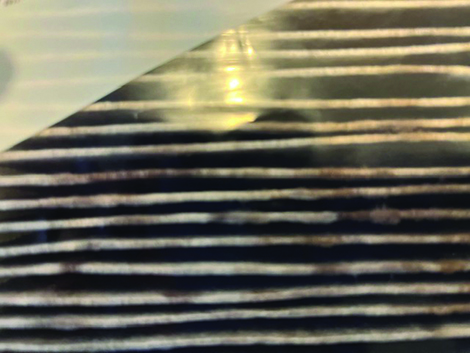By Sunny Lucia
Remember the old public service announcement, “It’s 10 o’clock. Do you know where your children are?” We’re in our 70s now and need to reframe that to fit our age: “It’s oil change time for your car.

Our parents didn’t assume that neighbors were looking out for us. That was their implicit responsibility, at least in my neighborhood. Think of your car maintenance people as the neighbor. That will make perfect sense in a moment.
I’d like to take you through the health crisis of my husband and I. Here is the laundry list of what we thought were single-issue symptoms that had been present for years, and involved many primary-care clinic visits:
- Chronic insomnia for years. A result of his high-conflict profession? We upgraded our mattress.
- Chronic oversleeping and extreme tiredness.
- Knee pain requiring a second total knee replacement when the first one failed; the surgery was six weeks before our world started falling apart. Leading up to the second knee replacement, pain was so consuming John got a bleeding ulcer from NSAIDs (non-steroidal anti-inflammatory drugs).
- Chronic cough for over six months. Tested negative for COVID. Strangely, I had the same cough.
- Perhaps time for a sleep study? Morning headache. From too little sleep?
- Sluggishness and sometimes difficulty breathing.
- Brain fog. He’s a numbers wizard and couldn’t read his own Excel spreadsheet formulas.
Two months after the second knee surgery, John’s health started to collapse. He fell face-first on our dining room floor at 11 p.m. one night. He was unconscious.
Why did he fall? No significant findings from multiple emergency-room tests–no stroke, no embolism in lungs or neck, no cranial bleeding. Didn’t appear to be a heart attack. Good news all, except his lungs were compromised with an unknown cause.
One week later he was coughing up bloody mucous. Legitimately scary, right? Another ER visit and this time hospital admission. Luckily, our medical group at UW Medicine wouldn’t give up until they found some answers, some cause, something for a firm diagnosis and appropriate treatment. On the third admission day, a specialized pulmonary transplant physician asked about our environment. “You’re both coughing, and that makes me suspect something in your environment.” We didn’t have any of the usual allergy elements in our lives. Yet it obviously needed investigation.
I tore our condo apart while John was in the hospital. Nothing. Then I connected a few things. We were both coughing incessantly in the morning and using an abundance of remedies over six to nine months, but nothing really helped.
We’d gone on a vacation for a week, returning just days before his fall. On vacation, neither of us coughed – at all. We got into his car at the airport on our return home, and I was coughing within three minutes.
The car was the infectious environmental source. I pulled out the cabin air filter, which was saturated with black and brown mold. It hadn’t been changed in the nine years my husband owned the car. The filter had an almost impossible access that took a special hex-head screwdriver tool and monumental tenacity. I’ve told our friends and family. Only one of 45 people knew there was an air filter in their car cabin
After 11 x-rays and 5 CT scans, 47 blood tests, a bronchopathy procedure, and a three-day hospitalization during which at least 15 medical specialists asked numerous questions, it looks like we’re turning a corner. The working diagnosis is lung infection and enlargement of the right heart ventricle due to breathing in microscopic mold particles over a long period of time. He has a treatment plan. My symptoms aren’t on the same scale, but I’m headed toward multiple tests to determine my own treatment options.
Your car maintenance folks are the neighbor. They may or may not be completing a long checklist of items. You’re the parent. It’s your responsibility to ensure you own safety and health, as well as anyone who rides in your car.
Do you know where your cabin air filter is in your car, and if it’s dirty or clean? It may be a good idea to explore that before possible health issues arise.
Sunny Lucia, who wrote this article, lives in Seattle and is retired after working as a healthcare and corporate training professional.
ABOUT CABIN AIR FILTERS
Most automobiles have a cabin air filter installed to help prevent harmful pollutants, including pollen and dust, from being pumped into the interior air when fans in the vehicle’s airflow system are running. The filters, which often are located behind the glovebox, can get clogged, inhibiting the flow of air, adding wear and tear on the car’s air system and engine, and creating potential health risks such as respiratory problems. Signs the filter might need to be replaced include:
- The vehicle’s heating or cooling makes excessive noise, or a whistling sound comes from the air intake ducts.
- Airflow is weak, even when the heat or air conditioner is on high.
- A musty odor in the vehicle.
Experts recommend checking the air filter every 15,000 to 30,000 miles. The owner’s manual for the vehicle can be consulted for a more precise service schedule.
Sources: Car and Driver magazine, CARFAX.com, Auto Zone